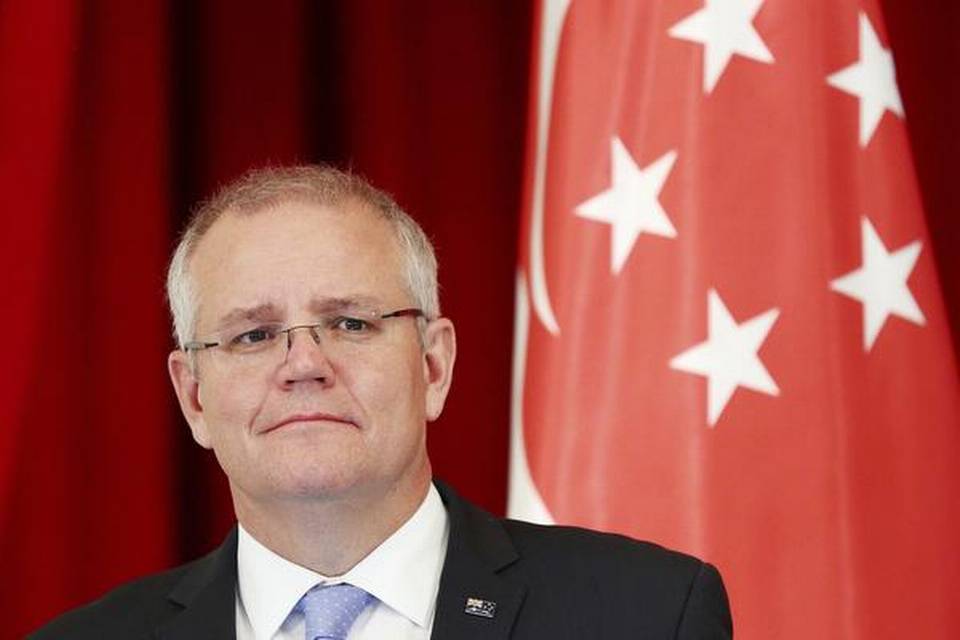
Two door guardians from Tamil Nadu and one serpent king from Rajasthan/Madhya Pradesh, purchased from idol smuggler Subash Kapoor, will be returned during Scott Morrison’s visit in January 2020
Three culturally significant artefacts — a pair of Dwarapala (door guardians) from Tamil Nadu and one serpent king from either Rajasthan or Madhya Pradesh purchased from idol smuggler Subash Kapoor — will be returned to India by the Australian government during Prime Minister Scott Morrison’s visit to India in January 2020.
A joint media statement from Mr. Morrison, Marise Payne, Minister for Foreign Affairs and Minister for Women and Paul Fletcher MP, Minister for Communications Cyber Safety and the Arts, reads: “The artefacts which were held by the National Gallery of Australia (Gallery), were purchased in good faith, but extensive research undertaken by the gallery has led to its decision to voluntarily return these artefacts to India.”
While the door guardians from Tamil Nadu are said to be from the 15th Century, the serpent king (Nagaraja) is dated 6th to 8th Century, and from Rajasthan or Madhya Pradesh.
“Like India, we understand the value of our ancient cultures and artefacts,” the Australian Prime Minister said. “The return of these artefacts is the right thing to do. This is another demonstration of deep relationship between Australia and India.”
Both India and Australia are party to the UNESCO 1970 Convention on the Means of Prohibiting and Preventing the Illicit Import, Export and Transport of Ownership of Cultural Property. Ms. Payne said : “The strong ties Australian and Indian institutions have made in recent years have helped develop important professional relationships and share culture. The return of these artefacts also underscores the world’s debt to India’s magnificent culture, history and legacy.”
Mr. Fletcher said that the historic artefacts play a significant role in modern society by allowing communities to acknowledge and celebrate their shared history and culture. “The National Gallery of Australia recognises this, and is strongly committed to the ethical collecting of cultural material and best practice collection management. I commend the Gallery for resolving these legacy issues,” he said.
The release further added that criminal law proceedings are currently underway in India and the United States against former New York art dealer Subhash Kapoor, from whom these artefacts were purchased. The Australian government does not have any role in these proceedings.
S. Vijay Kumar, art enthusiast and co-founder of India Pride that tracks Indian antiques, said that the return of the two door guardians, bought by the National Gallery of Australia for USD 495,000 in Aug 2005, stolen from Tamil Nadu, and the Nagaraja for USD 337,500 in April 2006 from Madhya Pradesh, will bring closure to an eight-year struggle with the Gallery.
“It started with us along with Jason Felch showing as evidence, photos showing the objects freshly looted against a vesti and lungi background. We also proved the fake provenance certificates issued by Art of Past for these purchases way back in 2015,” said Mr. Vijay Kumar.
He said that the returns are important as they provide much needed impetus to the sagging criminal trial of Subhash Kapoor by exposing the nexus between him and his associates. “The Nagaraja was smuggled out of India sometime in 1999 by the mastermind of the illicit trafficking network in India who went by the codename ‘Shantoo’, who we now know is Ranjit Kanwar,” he added.
The Prakash brothers, who ran the Indo-Nepal circuit, smuggled the two door guardians out of India sometime before 2002. Both have been named in the case filing on Subash Kapoor in New York by US authorities, providing graphic details of how these stolen artefacts are cleaned by intermediaries — in this case Solomon. He has been since charged with abetting this crime for cleaning and removing any trace of dirt from the Nagaraja.
